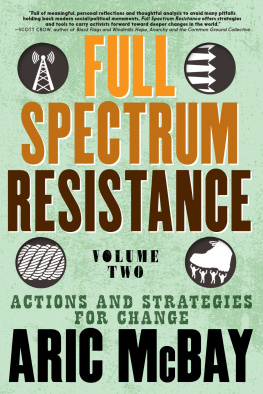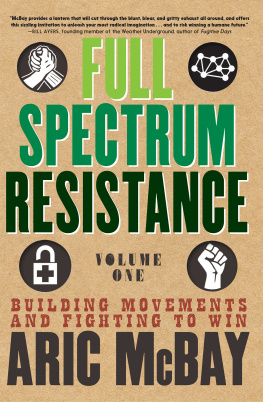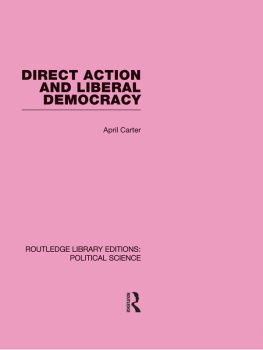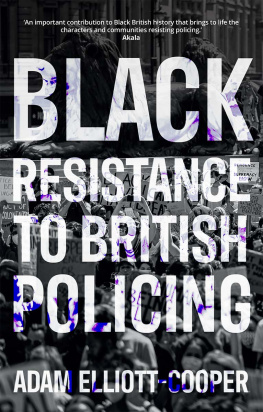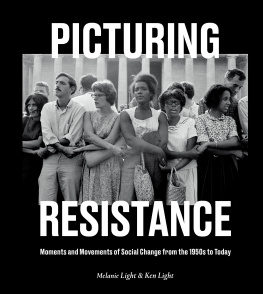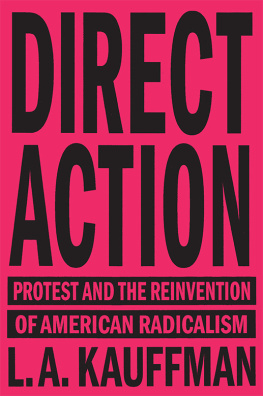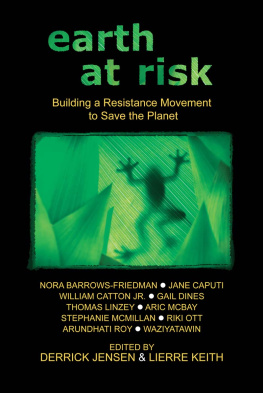Copyright 2019 by Aric McBay
All rights reserved. No part of this book may be reproduced, stored in a retrieval system, or transmitted in any form or by any means, including mechanical, electronic, photocopying, recording, or otherwise, without the prior written permission of the publisher.
Seven Stories Press
140 Watts Street
New York, NY 10013
sevenstories.com
Library of Congress Cataloging-in-Publication Data
Names: McBay, Aric, author.
Title: Full spectrum resistance / Aric McBay.
Description: New York : Seven Stories Press, [2019] Contents: Volume 1. Building movements and fighting to win -- Volume 2. Actions and strategies for change.
Identifiers: LCCN 2018057202| ISBN 9781609809119 (vol. 1 : pbk.) | ISBN 9781609809287 (vol. 2 : pbk.) | ISBN 9781609809126 (vol. 1 : ebook) | ISBN 9781609809294 (vol. 2 : ebook)
Subjects: LCSH: Social movements--History. | Social movements--Case studies. | Government, Resistance to--History. | Political activists--History. | Social change--History. | Social justice--History. | Environmentalism--History.
Classification: LCC HM881 .M433 2019 | DDC 303.48/4--dc23
LC record available at https://lccn.loc.gov/2018057202
Printed in the United States of America
9 8 7 6 5 4 3 2 1
Contents
Volume Two: Actions and Strategies for Change
SIDEBARS
FIGURES AND ILLUSTRATIONS
Recap of Volume One
Building Movements and Fighting to Win
Welcome to Volume Two of Full Spectrum Resistance.
The first volume began by exploring why we need resistance movements, what makes them effective, and how they win.
To recap: We live in a world racked by serious crises of human rights, justice, and ecology, but the traditional left and progressive movements have been whittled down to a few ineffective tactics. We need a resistance movement if we want to achieve any lasting justice and to save our planet.
Much of the left has forgotten, mythologized, or sanitized social movements of the past and does not understand how those struggles were actually won. Movements win by developing political force, by developing cultures of resistance, and by taking action.
Conversely, those in power rule by divide and conquer. To succeed, resistance movements must build shared understanding and solidarity, and employ diverse tactics while reaching across divides to build powerful movements that can use disruption and militancy.
In Full Spectrum Resistance, I show how resistance movements form and organize in practical terms. And effective resistance movements are more alike than they are different. From the Montgomery Bus Boycott to anti-colonial insurgencies, all movements need to develop critical capacities like recruitment, intelligence, and strategy.
In the first volume, we touched on dozens of stories and movements, from the Black Panthers to Indigenous blockaders, from anti-apartheid struggles to ACT UP. And in different chapters we explored three of those critical movement capacities:
Recruitment & Training: Resistance movements are made out of people; to win they must constantly recruit new people, while strengthening communities of resistance and developing the skills of existing members.
Groups & Organization: There is no one right way to organize, but a groups structure must match their strategy; the most effective movements arent militant or well-organized, but militant and organized.
Security & Safety: Resistance movements are a threat to power and must consciously protect themselves from external repression and infiltration; they also have to keep their members safe from internally damaging or disruptive people; history shows us many tools for accomplishing this, and also demonstrates what happens when we fail to use those tools properly.
In the second volume of Full Spectrum Resistance, well explore more stories of successful resistance, and learn from movements around the world.
How did a group of Greek anarchists take over a television station during a period of country-wide upheaval? How did a blind teenager build one of the most powerful resistance movements in Nazi-occupied France? How did liberation movements in Vietnam defeat far wealthier and more powerful invaders? And how did a small group of Indigenous women bring a decisive end to an unwanted garbage dump that a community fought against for decades?
Well use those and other stories to investigate the critical capacities that successful movements must build. How they communicate with supporters and each other ().
Finally, well bring together every key idea and theme in this book to understand how movements take effective action ().
If you need a refresher on key terms or ideas from this book, check out the glossary at the end of the volume.
For more information and bonus content, visit FullSpectrumResistance.org.
CHAPTER 7
Communications
One can lack any of the qualities of an organizerwith one exceptionand still be effective and successful. That exception is the art of communication. It does not matter what you know about anything if you cannot communicate to your people. In that event you are not even a failure. Youre just not there.
Saul Alinsky
If youre not careful, the newspapers will have you hating the people who are being oppressed and loving the people who are doing the oppressing.
Malcolm X
GREEK TELEVISION TAKEOVER
First, there are protestsand a few major riotsaround the country. Then anarchists, radical leftists, and antiauthoritarians take over schools and squares. In some places, police stations and government buildings are attacked. Capitalism is a target as hundreds of luxury stores are destroyed. The occupied schools and government buildings become social and political hubs for distributing radical information.
But the media is still dominated by the propaganda of the government and the capitalists who caused the economic crisis in the first place. So Greek resisters decide to stage a takeover of a national television station so they can bring their message directly to a mass audience.
A group of artists, actors, documentarians, and anarchists spend a week in a basement planning the action. They decide to take over the three oclock news (prime time in a country where most people take a midafternoon break).
They make huge maps of the station building and memorize them. Sympathetic insiders from the television industry work with them to prepare. They split the group into three teams to target the control room and studio, the master signal room, and the office of the station president. Each target is on a different floor, but must be reached at exactly the right time to ensure the takeover. They rehearse the plan until they have memorized every corner of the map; they time each step to the second.
The action happens on Tuesday, December 16. To bypass security at the main door and avoid raising suspicion, they sneak people in through a side door a few at a time, over two hours, until all fifty activists are inside. They dress the part in suits and formal clothing; each person carries a prop for their cover story, like a file folder or a handful of mail.
They enter their target rooms at the appointed time. In the master signal room they call out instructions; in the control room, they take over the seats of the corporate control staff. They act as friendly as possible, and reassure the staff that they will only be there a few minutes.

